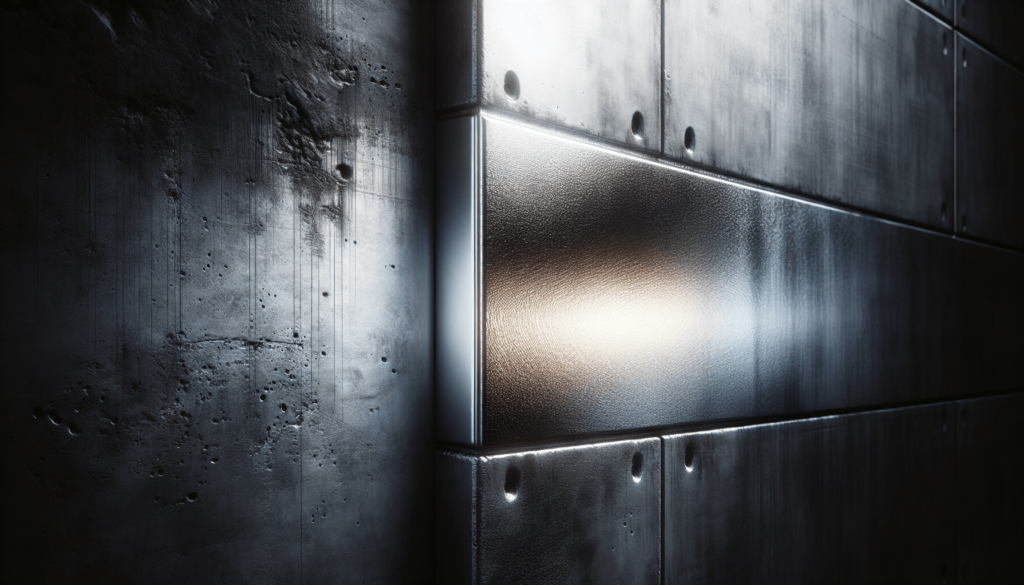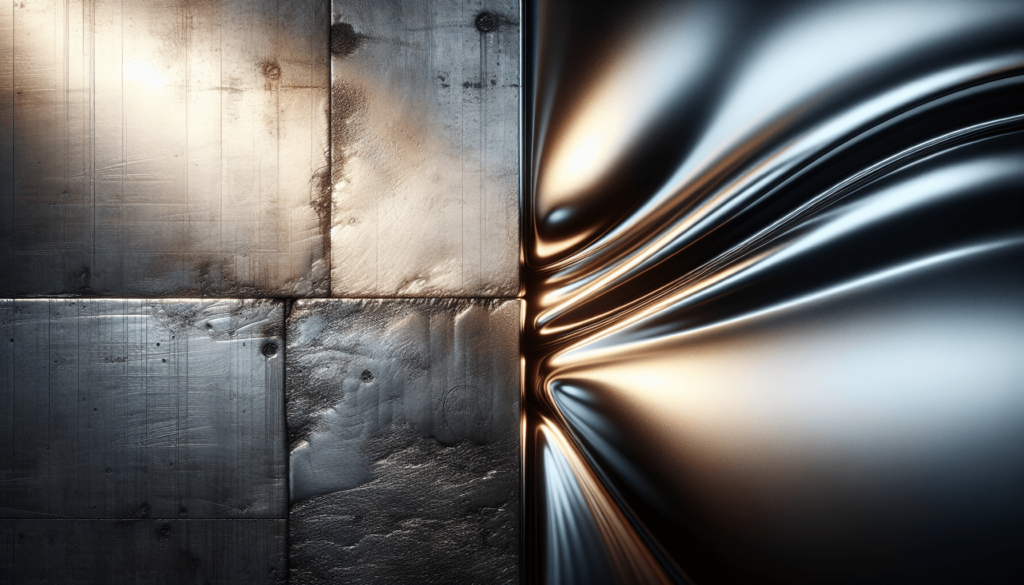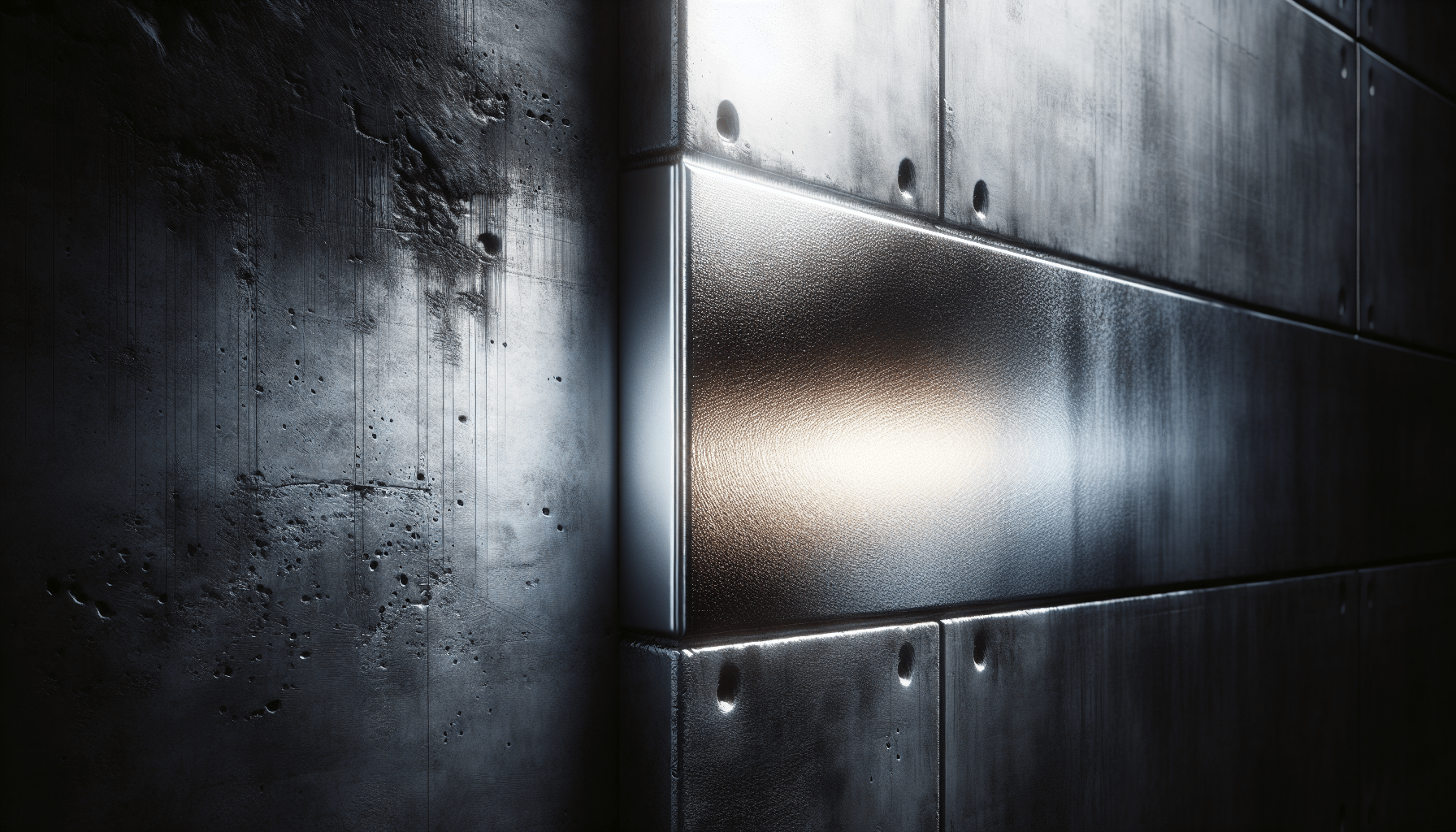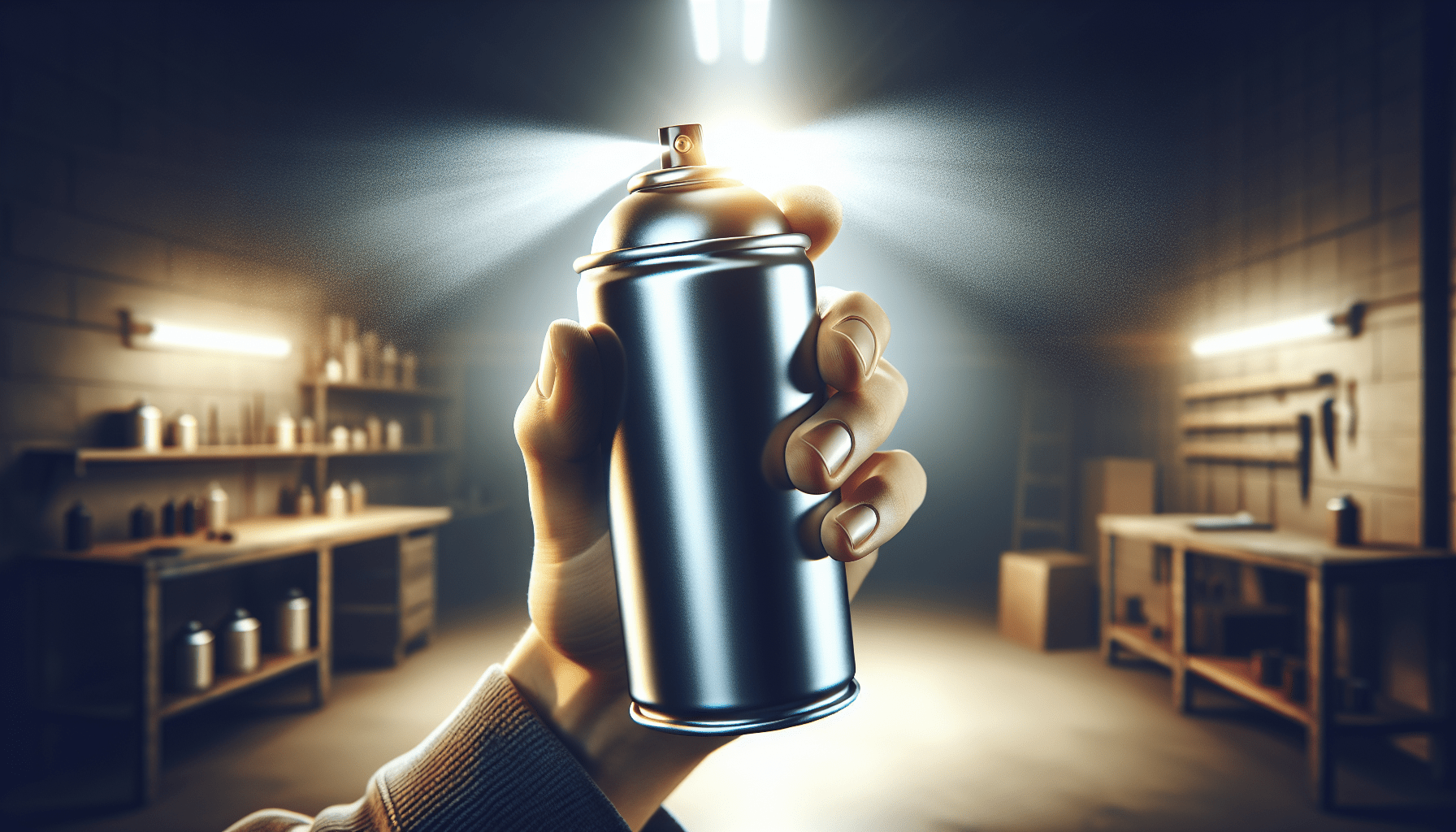Have you ever wondered if metallic paint can be used on concrete surfaces? This question is particularly pertinent for those looking to elevate the aesthetic quality of concrete structures such as patios, driveways, or interior floors. The marriage of concrete’s durability with the striking appeal of metallic paint presents a compelling opportunity. However, before embarking on such a project, it’s essential to understand the properties of both concrete and metallic paint, as well as any preparatory and application procedures required.
Understanding Metallic Paint
Metallic paint is known for its shimmering finish, which is achieved through the incorporation of tiny metallic particles. These particles provide a reflective quality and can mimic the look of metals such as gold, silver, bronze, and more. Widely used in automotive industries and interior design, metallic paint has gained popularity for its ability to add depth, dimension, and a luxurious appearance to various surfaces.
Composition of Metallic Paint
The unique properties of metallic paint stem from its composition. Typically, it consists of the following ingredients:
- Binder: Holds the pigments together and ensures adhesion to the surface.
- Pigments: Provide color and opacity.
- Metallic Flakes: Give the paint its characteristic sheen and reflective quality.
- Solvents: Facilitate application and drying.
Understanding these components is crucial because it influences how the paint interacts with the concrete substrate.
Characteristics of Concrete
Concrete is a composite material made from a mixture of cement, aggregates (like sand and gravel), and water. This versatile material is known for its durability, strength, and cost-effectiveness, making it a popular choice for a variety of construction projects.
Properties of Concrete
Concrete has several properties that affect its compatibility with metallic paint:
- Porosity: Concrete is porous, meaning it can absorb liquids, including paint.
- Texture: The surface can be rough or smooth, affecting paint adhesion and appearance.
- Alkalinity: Fresh concrete tends to be alkaline, which can impact the paint’s adhesion and durability.
Understanding these properties helps in determining the necessary steps for surface preparation and the type of paint suitable for use on concrete.

Compatibility of Metallic Paint with Concrete
When considering metallic paint for concrete surfaces, several factors play into its compatibility and performance.
Adhesion
One of the primary concerns is whether the metallic paint will adhere to the concrete surface. Due to the porous nature of concrete, proper surface preparation is essential to ensure that the paint bonds effectively. Failure to prepare the surface adequately can lead to peeling, chipping, or flaking.
Durability
The durability of metallic paint on concrete will depend on several factors, including the quality of the paint, surface preparation, and environmental conditions. High-quality metallic paints are formulated to withstand various conditions, but it’s crucial to choose a paint specifically designed for durability and outdoor or heavy-use applications if necessary.
Finish
Another important consideration is the finish of metallic paint on concrete. The reflective quality of metallic paint can highlight surface imperfections, making thorough preparation crucial. Additionally, the type of concrete finish (e.g., smooth vs. rough) can impact the final appearance of the metallic paint.
Preparing Concrete for Metallic Paint
Proper preparation of the concrete surface is crucial to achieving a successful and lasting metallic paint finish. Below are the necessary steps for preparation.
Cleaning the Surface
Begin with a thorough cleaning to remove any dirt, grease, or existing coatings. This can be achieved using the following methods:
- Pressure Washing: Effective for removing surface dirt and grime.
- Chemical Cleaners: Use suitable concrete cleaners to remove oil and grease stains.
Repairing Imperfections
Inspect the concrete surface for any cracks, holes, or imperfections. These should be repaired using a suitable concrete patching compound. Allow sufficient drying time before proceeding to the next step.
Etching the Surface
Etching the concrete involves applying a mild acid solution, typically muriatic acid, to create a rough texture that enhances paint adhesion. This process involves applying the acid, scrubbing the surface, and then thoroughly rinsing it with water.
Priming
Priming is essential as it enhances adhesion and ensures an even paint application. Use a concrete primer specially formulated for metallic paint to provide a suitable base. Allow the primer to dry according to the manufacturer’s recommendations before applying the metallic paint.

Application of Metallic Paint on Concrete
Once the surface is prepared, the next step is the application of the metallic paint. Here’s a detailed guide to ensure optimal results.
Tools and Materials
For a successful application, gather the following tools and materials:
- Metallic Paint: Choose a high-quality paint suitable for concrete.
- Paint Sprayer or Roller: Depending on the surface area and desired finish.
- Protective Gear: Gloves, masks, and safety glasses for protection.
- Painter’s Tape: For masking off areas that do not require painting.
Applying the Paint
- Start with a Test Area: Apply the paint on a small, inconspicuous area to ensure compatibility and desired appearance.
- Mix the Paint Thoroughly: Ensure that the metallic particles are evenly distributed.
- Apply the First Coat: Using a paint sprayer for a smoother finish or a roller for larger areas, apply the first coat evenly.
- Allow Proper Drying Time: Follow the manufacturer’s instructions regarding drying times between coats.
- Apply Additional Coats: Typically, two to three coats will provide the best finish. Ensure each coat is dry before applying the next one.
- Final Inspection: After the final coat has dried, inspect the surface for any missed spots or uneven areas and touch up as needed.
Sealing the Paint
To protect the metallic paint and enhance its durability, it’s advisable to apply a clear sealer. A high-quality concrete sealer will provide a protective layer against environmental factors and wear and tear.
Types of Sealers
There are various types of sealers suitable for use over metallic paint on concrete:
- Acrylic Sealers: Provide a clear, glossy finish and are easy to apply.
- Epoxy Sealers: Known for their durability and resistance to chemicals.
- Polyurethane Sealers: Offer excellent abrasion resistance and come in various finishes (glossy, semi-glossy, matte).
Application Process
- Ensure the Paint is Completely Dry: Before applying the sealer, make sure the metallic paint is fully cured.
- Apply the Sealer Evenly: Use a paint sprayer, roller, or brush to apply an even coat.
- Allow Drying Time: Following the manufacturer’s recommendations, allow adequate drying time.
Maintenance and Care
Proper care and maintenance of the painted concrete surface will extend its longevity and maintain its appearance.
Regular Cleaning
Periodic cleaning of the surface is essential to remove dirt and debris that can damage the paint or sealer. Use a mild detergent and water, and avoid harsh chemicals that can degrade the finish.
Routine Inspections
Regularly inspect the surface for any signs of wear, chipping, or damage. Promptly addressing small issues can prevent larger problems from developing.
Reapplying the Sealer
Over time, the sealer may wear away, particularly in high-traffic areas. Reapply the sealer as needed to maintain the protective layer.
Advantages and Disadvantages
Understanding the pros and cons of using metallic paint on concrete can help you make an informed decision.
Advantages
- Aesthetic Appeal: Metallic paint offers a unique, eye-catching finish that can transform standard concrete into a visually stunning surface.
- Versatility: Suitable for various applications, including floors, walls, and outdoor surfaces.
- Durability: When properly applied and sealed, metallic paint can withstand environmental factors and wear and tear.
Disadvantages
- Preparation Requirements: Proper surface preparation is essential, which can be time-consuming and labor-intensive.
- Skill Level: Achieving a flawless metallic finish may require advanced painting skills and specialized equipment.
- Cost: High-quality metallic paints and sealers can be more expensive than standard concrete paints.
Use Cases for Metallic Paint on Concrete
While the application of metallic paint on concrete can suit a variety of contexts, here are some specific use cases to consider:
Residential Flooring
Metallic paint can be used to create visually appealing indoor and outdoor flooring solutions. Whether in living rooms, basements, or patios, it provides a unique, luxurious appearance.
Commercial Spaces
Businesses can benefit from the aesthetic appeal of metallic painted concrete floors. Retail stores, restaurants, and office spaces can use it to create an inviting, upscale environment.
Artistic Applications
Metallic paint allows for creative expression in various art and design projects. From murals to decorative furniture pieces, the combination of metallic paint and concrete can produce stunning results.
Industrial Use
In industrial settings, metallic paint can be used to enhance the visibility of certain areas or equipment, contributing to both aesthetic and functional improvements.
Frequently Asked Questions
Here are some common questions regarding the use of metallic paint on concrete:
Does Metallic Paint Last Long on Concrete?
When applied correctly and sealed, metallic paint can be very durable. Proper maintenance further extends its lifespan.
Can Metallic Paint Be Applied Over Sealed Concrete?
Applying metallic paint over sealed concrete can be challenging as it may not adhere well. It’s often necessary to remove the existing sealer or use a specialized bonding primer.
How Do I Achieve a Smooth Finish?
To achieve a smooth finish, use a paint sprayer and ensure the surface is thoroughly prepared. Multiple thin coats are often more effective than a single thick coat.
Is It Safe to Use Metallic Paint Outdoors?
Yes, provided you choose a high-quality paint designed for outdoor use and apply a protective sealer to it.
Can I Apply Metallic Paint Myself or Should I Hire a Professional?
While it is possible to apply the paint yourself, hiring a professional can ensure a flawless finish, particularly for larger or more complex projects.
Conclusion
The application of metallic paint on concrete offers an exciting opportunity to combine the strength and durability of concrete with the stunning visual appeal of metallic finishes. Understanding the properties of both concrete and metallic paint, along with careful preparation and application, can result in a durable, attractive surface that stands the test of time. Whether you’re considering a residential, commercial, artistic, or industrial project, the use of metallic paint on concrete presents a versatile and luxurious solution. With attention to detail and proper maintenance, this combination can deliver impressive and lasting results.



